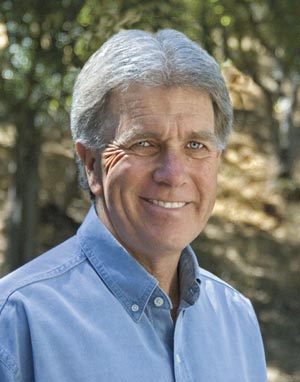Getting Out: It’s springtime in Yosemite. I know the calendar
has a different opinion on the matter, but I visited Yosemite last
week, and the calendar is wrong.
It’s springtime in Yosemite. I know the calendar has a different opinion on the matter, but I visited Yosemite last week, and the calendar is wrong.
I began to suspect some kind of seasonal dysfunction on the approach to the park entrance above El Portal. The Merced River, normally very polite and restrained in its ride past the rocks this time of year, was a large and rowdy froth. At the entrance to the valley, Bridalveil Falls, a weak ribbon of water in autumn, was strutting like Muhammad Ali before a title fight. I spoke to park visitors who said recent rains had been very heavy, and the proof was raging in the granite creases. Take that, calendar! It’s springtime in Yosemite.
I exited the valley as quickly as I had entered. I turned onto the road to Wawona and began climbing out of the valley toward Glacier Point. Several miles before the road ended, I parked at the trailhead to Taft Point and Sentinel Dome.
One of the ways I measure a hike is by the formula: Spectator value divided by hiking effort equals Pleasure factor. It is very scientific, but with a high spectator value and a low hiking effort, the pleasure factor increases. After taking this walk and doing the calculation, the pleasure factor was so high that I ended up with a number that only Stephen Hawking could understand.
Two trails begin here; one to Taft Point and one to Sentinel Dome. The path to Taft Point is a flat mile that amounts to a 20-minute stroll, but don’t be in a hurry to get there. One of the wonders of Yosemite is the majesty of the trees which is easy to overlook when surrounded by 3,000-foot granite walls and 1,200-foot waterfalls. As you walk past manzanita, chinquapin and huckleberry oak, look for some monumental red firs that deserve an awed pause and a neck crane.
At the final approach to the Taft Point, the forest opened, and I gazed across a broad flat granite expanse that was dotted with an occasional Jeffrey pine. As I dropped onto this expanse and moved past the trees, I could see that up ahead — on the right, on the left, and straight ahead — the world simply dropped away.
Indeed it did. At each spot on the perimeter of Taft Point (7,400 feet), one step separated me from a free fall to the valley (4,000 feet). Much of Taft Point overhangs the cliff beneath, and a bit of railing protects only one small spot. The sense of exposure was intoxicating, but I felt a palpable shudder when I stepped within a few feet of the edge.
But the view does not suffer when you step back from the edge. It is unsurpassed. On my left were Cathedral Rocks and El Capitan, straight across were the Three Brothers, and to my right was a raging Yosemite Falls. As though from an airplane window, I looked down without obstruction on the full reach of each of these massive natural features.
A notable feature on one side of the point is the Fissures, deep clefts gashed into the perimeter of the point. They are a few feet across but hundreds of feet deep, some with large granite boulders trapped where the fissures narrow.
Bring a lunch and linger here. The views were wonderful, but there is much to enjoy close at hand: the bonsai-like pines growing from narrow cracks in the granite, the occasional huge granite boulder sitting where the retreating glacier dropped it thousands of years ago, and ranks of icicles hanging in the shaded fissures.
The trip to Taft Point and back is an easy day trip, and it is one you will long remember.










